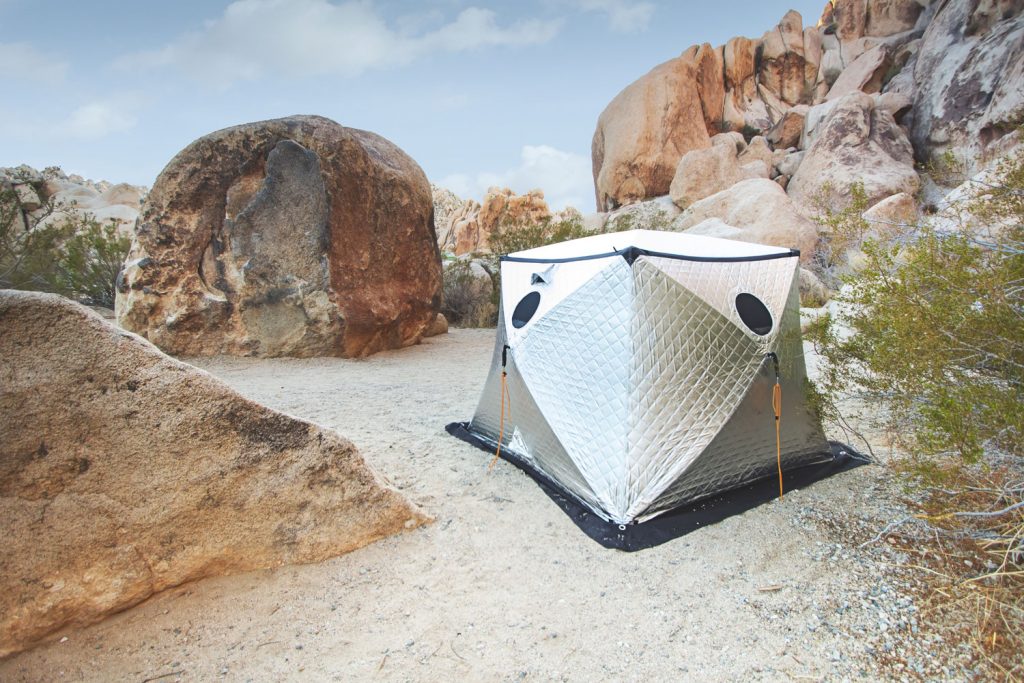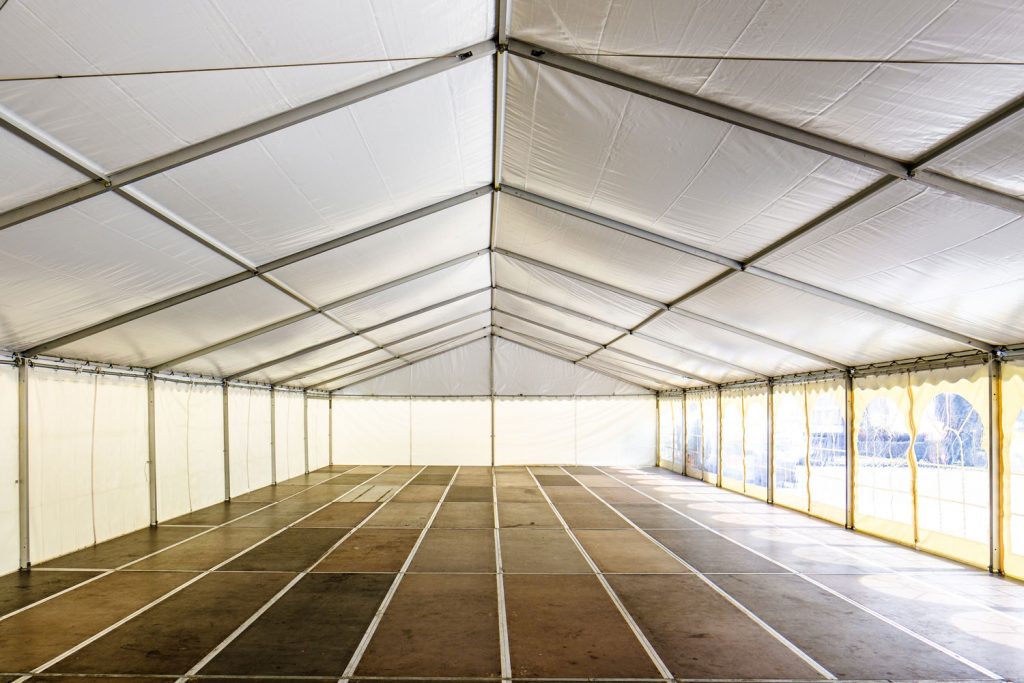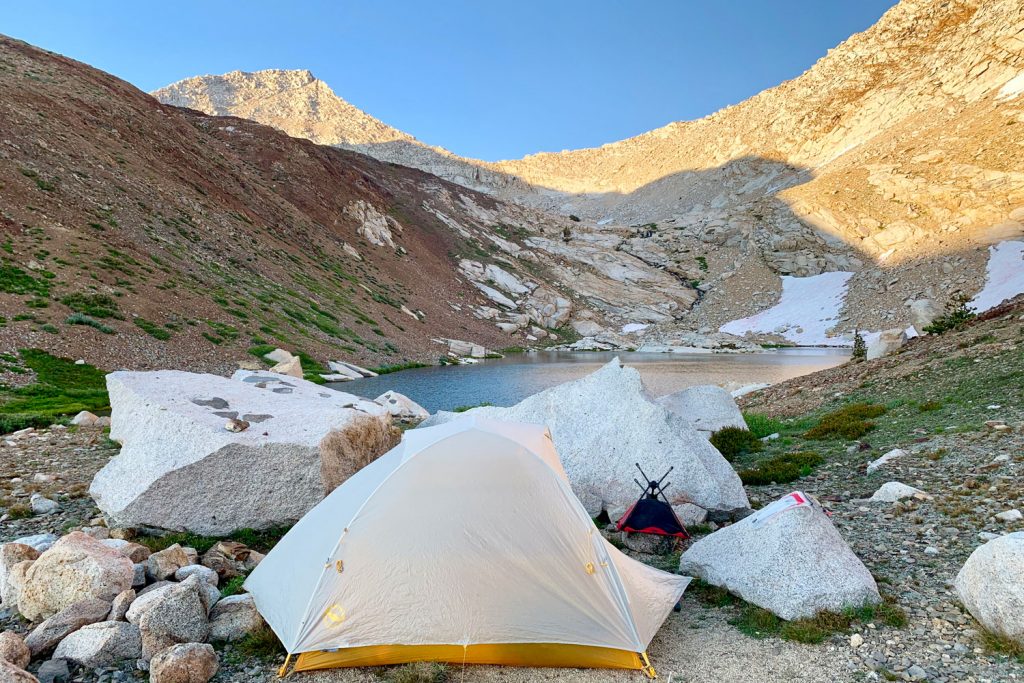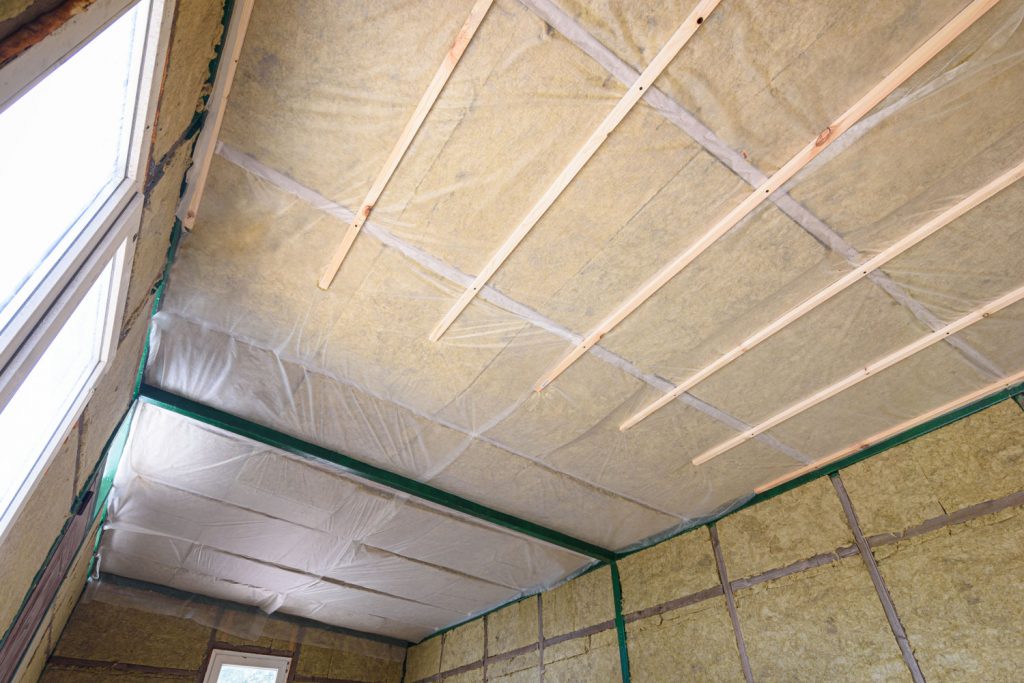Hiking and camping are more than enjoyable pastimes for some. For many, they're a large part of their lifestyle, so it makes sense that they wouldn't want to cancel their trips due to the weather. So how can you insulate your tent for winter and summer conditions? We've done the research to give you an answer.
To insulate a tent for winter, you can prepare the ground with undergrowth or a mat, place a waterproof cover over the tent, wrap the exterior of the tent with bubble wrap, and line the inside of the tent with air bubble reflective foil.
To insulate a tent for summer, you can place a tarp or sunshade over the top of the tent, place a tarp or blanket underneath the tent, and drape a reflective tarp over the top of your tent.
Now you have some basic ideas on how to insulate your tent, but maybe you'd like more information. In this post, we'll discuss the topic in greater detail. We'll also talk about how to stop condensation in a tent and more. Without further ado, let's get into it!

Insulating Your Tent In Winter
Winter can be a dangerous time to camp if you don't have the know-how and the right products. A large part of staying warm and healthy during winter trips is to properly insulate your tent. We will give you some instructions to help you keep your tent insulated.

Prepare The Ground
Preparing the ground for your tent is essential in the winter months. This is because the ground is often frozen. If you place your tent directly upon it, it will definitely make your tent cooler and make it less comfortable for lounging and sleeping.
How you will prepare the ground will depend on the type of terrain you will be camping in. If you will be camping in the woods, it will work just as well as anything else to prepare the ground with undergrowth.
Moving leaves and other debris into a compressed pile beneath the tent will create a nice insulating layer between the ground and the bottom of the tent.
If you will be camping in an area where the undergrowth is not as easily found, you can bring along a foam mat for placing underneath the tent. This will serve as a solid insulating base.
After you have added this layer of insulation, you will want to seal the edges to prevent the movement of air and precipitation underneath the tent. You can seal the edges with snow or undergrowth.
Cover The Tent
Winter storms can make winter camping problematic. Of course, this means a large amount of precipitation. This precipitation could very likely gather on the top of your tent and leak inside.
Furthermore, cool air can enter the tent through the top. So, it's best to cover the tent with a waterproof tarp. It will add a layer of protective insulation.
Check out this waterproof tarp on Amazon.
Wrap The Tent
After you have prepared the ground and covered the tent, it's time to wrap it. Avid campers recommend doing so with bubble wrap.
Check out this bubble wrap on Amazon.
While this may seem odd, they have their reasons. Bubble wrap is filled with air, air that prevents cool wind from making its way through your tent material.
Also, bubble wrap is light and easy to carry. Pull the bubble wrap around your tent and secure it with rocks. You can tuck the waterproof tarp into this layer, making for a better seal against cold air and winds.
Line The Inside Of The Tent
Now, you should insulate the inside of your tent. You can insulate the walls with air bubble reflective foil, piling on as many layers as you'd like.
Take a look at this air bubble reflective foil on Amazon.
This will create another barrier against the cool air and winds and prevent heat from escaping. Then, line the floor with another foam mat. It will keep the ground even warmer for sitting and sleeping on.
How Can I Make My Tent Warmer?
Once you've insulated your tent so that heat can't escape, you may want a quick way to make the inside of it warmer. There are a couple of good options for you.
One of these is an electric heater. Electric heaters are a safe way to add heat to your tent, but they do require electric hookups. In some cases, this may be feasible, such as if you are camping with your vehicle. But if you are hiking to the area, this would not be feasible.
Another is using candle lanterns. These will add heat to the tent more slowly, but over time, they will warm the area nicely.
Take a look at this candle lantern on Amazon.
Insulating Your Tent In Summer
We often think of the summer as the prime time to be in the outdoors, but the truth is that the heat can be very uncomfortable and even dangerous.

Campers need their tent to be a place where they can comfortably rest and escape from the scorching sun. We'll give you a few tips to make your tent more pleasant in summer.
Cover The Ground
During the summer, the ground holds quite a bit of heat, so it's necessary to provide a layer between it and the tent. You can do so with a foam mat or insulating blanket. This will keep the heat energy in the ground.
Check out this camping blanket on Amazon.
Be sure that the foam mat or insulating blanket is large enough to create a layer underneath the entire tent, and then set up the tent on top of it.
Cover The Tent
Now you will need to cover the tent. Heat will be absorbed from the sun's rays into the tent material, which will then heat up the interior of the tent.
In addition to that, summer storms are also a possibility, which means precipitation falling on and leaking into the tent.
To prevent either of these things from happening, you should cover your tent with a waterproof layer, preferably a tarp. This will both help to keep the tent cool and block moisture from entering.
Drape A Reflective Tarp
Even after all of this has been done, the rays from the sun can still be excruciatingly hot. There is one more measure that can be taken to prevent the sun from making your dwelling unbearable.
You can drape a reflective tarp over the top of your tent. This can be done by tying the tarp between trees or poles.
How Do You Stop Condensation In A Tent?

Condensation inside a tent can make it less comfortable. Having a dry place to rest is essential, so we'll give you a few ways to keep condensation at bay.
You should pitch your tent under trees if possible. Condensation tends to rest on whatever is highest. If there are leaves on the trees, the morning dew will set on those and not on your tent.
You should try to limit the humidity inside of your tent. So, don't bring wet items such as towels and muddied boots inside.
You should also ventilate the tent as much as possible. If your tent has inner windows, try to make sure that those are open. You should open the rainfly vents as well.
Keep in mind that when ventilating, you should see that there are ventilation areas on each side of the tent to provide cross ventilation.
Is There Such Thing As An Insulated Tent?

Yes, there are pre-insulated tents. These tents sometimes need to be blown up. They are on the higher side in terms of cost, and they can be bulky for hikers. However, this can be offset by the fact that the other insulation materials may not be necessary to bring along.
Check out this insulated tent on Amazon.
How Warm Are Insulated Tents?
While insulated tents do not necessarily start out warm when they are pitched, they will keep warmth inside much better than a standard tent. An insulated tent may have an R-value (the measure of heat resistance) of 3 to 5. An R-value of 3 is good, while an R-value of 5 is best.
In Closing
A tent is a great, portable shelter for outdoor enthusiasts, but during very cool or warm weather, it can become downright unbearable to stay in. That's where learning to properly insulate a tent is needed.
We've given instructions on how to insulate a tent in both the summer and winter seasons, including covering the ground, lining the interior and exterior of the tent, and even placing tarps above the tent. We hope this will be helpful information to have on your next adventure!
Want to learn more about insulation? Visit these related posts:






